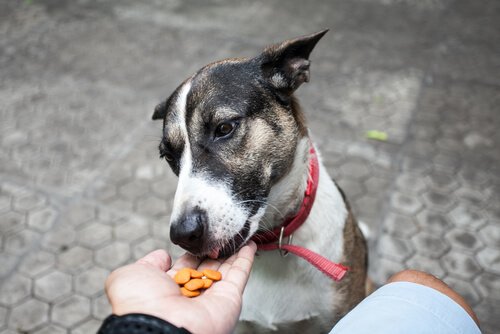Things that Can Reduce Your Dog's Life

There are different things that can reduce your dog’s life expectancy. Some examples are age, lifestyle, diet, and certain medical conditions.
Your dog’s average life expectancy
Experts say that on average, the maximum life expectancy of a dog is around 15 years old. As long as they have a healthy lifestyle, good diet, safe environment, and an exercise routine. However, there are many more variables that can come into play.
Poor diet

A good diet is import for your dog to develop healthily. When a dog eats a nutritious and varied diet, he will most likely have a better quality of life and live longer. On the contrary, a dogs life can be cut short if he doesn’t eat high quality dog food or doesn’t have a nutritious diet.
It would be best to check with a specialist in regard to your dog’s diet. A veterinarian would know what type of diet would be best for your dog according to his age, breed, and needs. Likewise, a dog’s metabolism needs to consume fat and get plenty of exercise. Unlike people, who replenish their energy with carbohydrates, dogs need high quality fats to do so.
Puppies
Poor quality fats are very harmful to dogs. Even an obese puppy can have serious development problems. There is no need to give a puppy vitamin supplements, if you feed him a proper diet that provides all necessary vitamins, minerals, and nutrients, unless directed by the veterinarian.
Commercial products and dog foods contain the nutrients needed for a dog to grow up healthy. An excessive amount of vitamins can cause diseases associated with abnormal growth and development.
Some specialists claim that eating bones don’t do much; they don’t even provide calcium or strengthen the teeth. On the contrary, they can cause obstruction, stomach and intestinal damage, and constipation. If the dog likes chewing, it’s better to give him toys or cowhide bones.
Another myth is giving your dog one meal a day. It has been proven that dividing the daily amount of food into two meals is better: one during the morning and the other at night.
Necessary exercise
It is important that your dog gets plenty of exercise. If he doesn’t, his life expectancy can reduce by five years. Animals need to release all of their stored energy. Animals need a customized daily exercise routine according to their needs. In many breeds, going out three times a day is enough.
Dangerous substances
Dogs’ curiosity can be dangerous. When going on walks, dogs could put their snouts into dangerous places. This usually takes place in parks, gardens, and other places where other dogs tend to walk through. Plants can carry or secret poisonous and dangerous substances.
The breed
Many specialists say that some dog breeds live longer than others. For example, large-sized canine breeds live less than small-sized breeds. The theory says that large-sized dogs use a lot of energy during their first few years of life. So later, when they are older, they become much more sedentary.
Some examples of breeds that have a short life expectancy are: Newfoundlands, Saint Bernards, Great Danes, Greater Swiss Mountain Dogs, English Mastiffs, and many others.
Your dog’s environment

Apart form a dog’s diet, the environment is a key variable for a dog’s healthy development. If a pet grows up in unhealthy environment, such as not complying with his needs, and neglecting him, it’s most likely he will have a short life expectancy.
Accidents
Every year, there are thousands of dogs that die at home or due to a highway accident. The first case usually involves poisoning caused by chemical products. The second is due to dogs not wearing a leash or ID tag.
